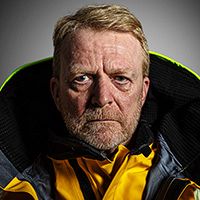We crossed the finish line yesterday afternoon!
More precisely, we crossed the first of several potential finish lines nominated by the race committee for Race 11, Seattle to Panama (or as far as we can practically get!). Don’t worry, this is not a spoiler; the nature of this leg of the race has been covered extensively in recent Skipper and crew blogs and I need not bore you with repetition.
As you know, we have been experiencing, and continue to experience light conditions. The unpredictability of the weather as we approach the ITCZ (the doldrums) makes it very difficult to assess passage times and an arrival window for a single yacht, let alone a fleet of eleven which have departed from different ports, on different days, driven by different weather systems. All of that is further compounded by the fact that, at the end of this 4000nm+ mile race, we then have to transit one of the busiest waterways on the planet, the Panama Canal.
This bottleneck operates on a very tight schedule with very strict rules and one cannot simply turn up and request passage. Everything must be planned in advance and time slots are strictly adhered to. Furthermore, the canal is designed to carry some of the largest cargo vessels afloat, albeit with millimetres to spare, and the scale of it all is, indeed, impressive.
The relatively tiny size of the Clipper 70 race yachts makes it necessary to travel in numbers. We will raft up (literally tie the boats together), possibly three boats at a time and venture into the enormous locks, together with the commercial shipping, where we will do just as the highly experienced and qualified pilots tell us to do. The pilots are mandatory for all vessels transiting the canal and, interestingly, the Panama Canal is the only place in the world where the pilot takes overall command of the vessel from the usual Master.
So, as you can probably tell, it is quite a complicated task to plan, coordinate and execute this essential phase of our round-the-world race. To mitigate all of this, a number of potential finish lines have been identified as likely places to end the race within the rules, enabling the fleet then to make best speed under engine and arrive in Panama in a timely manner for our onward journey. Whilst we continue to race on to the next finish line, the Race Committee are constantly watching our progress, scouring the weather forecasts, tweaking the timetable, etc.
I do not envy them this task and I am very glad that all I have to worry about is VMG, presently 6.1 knots; next finish line in about twelve hours!

